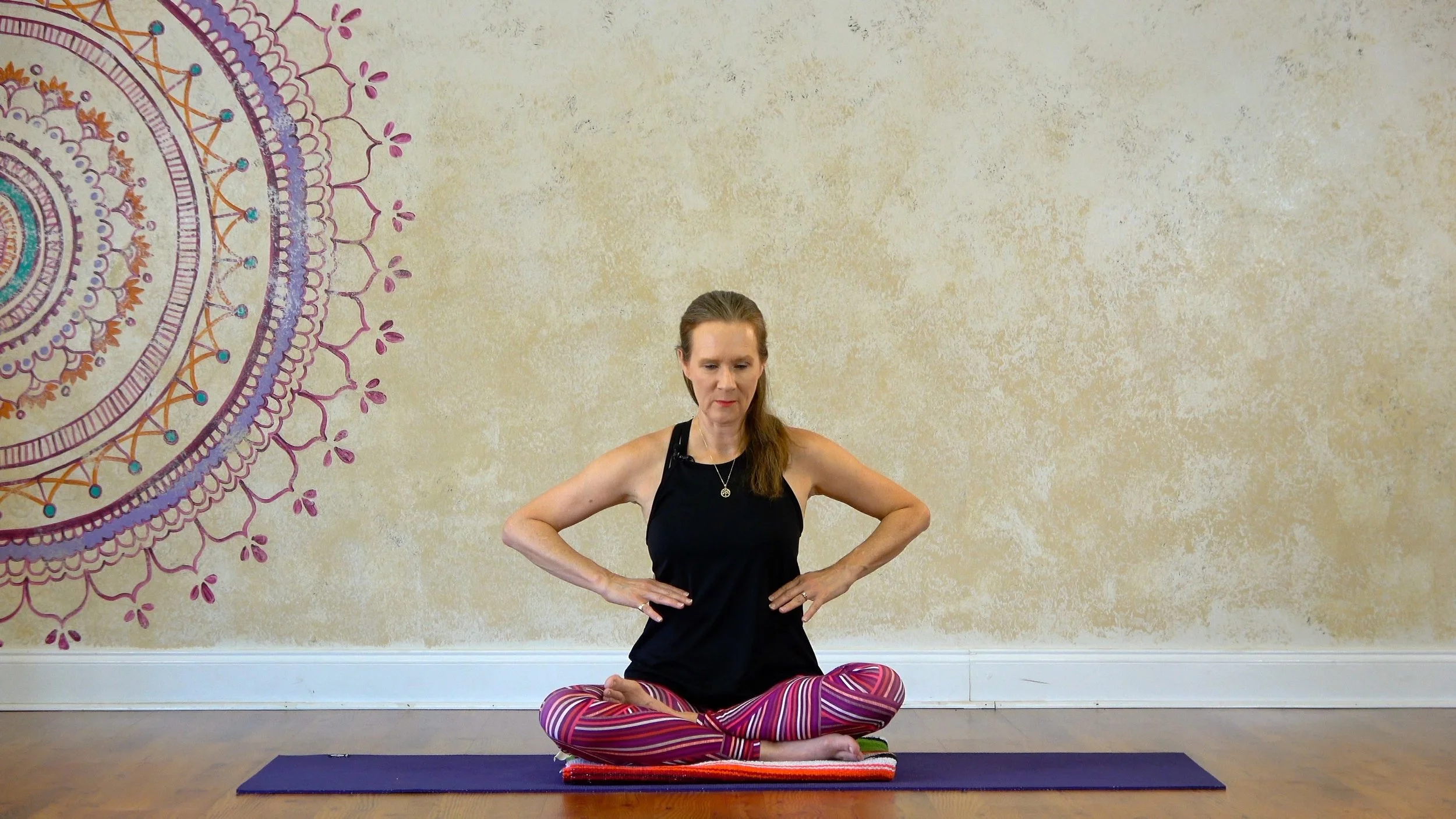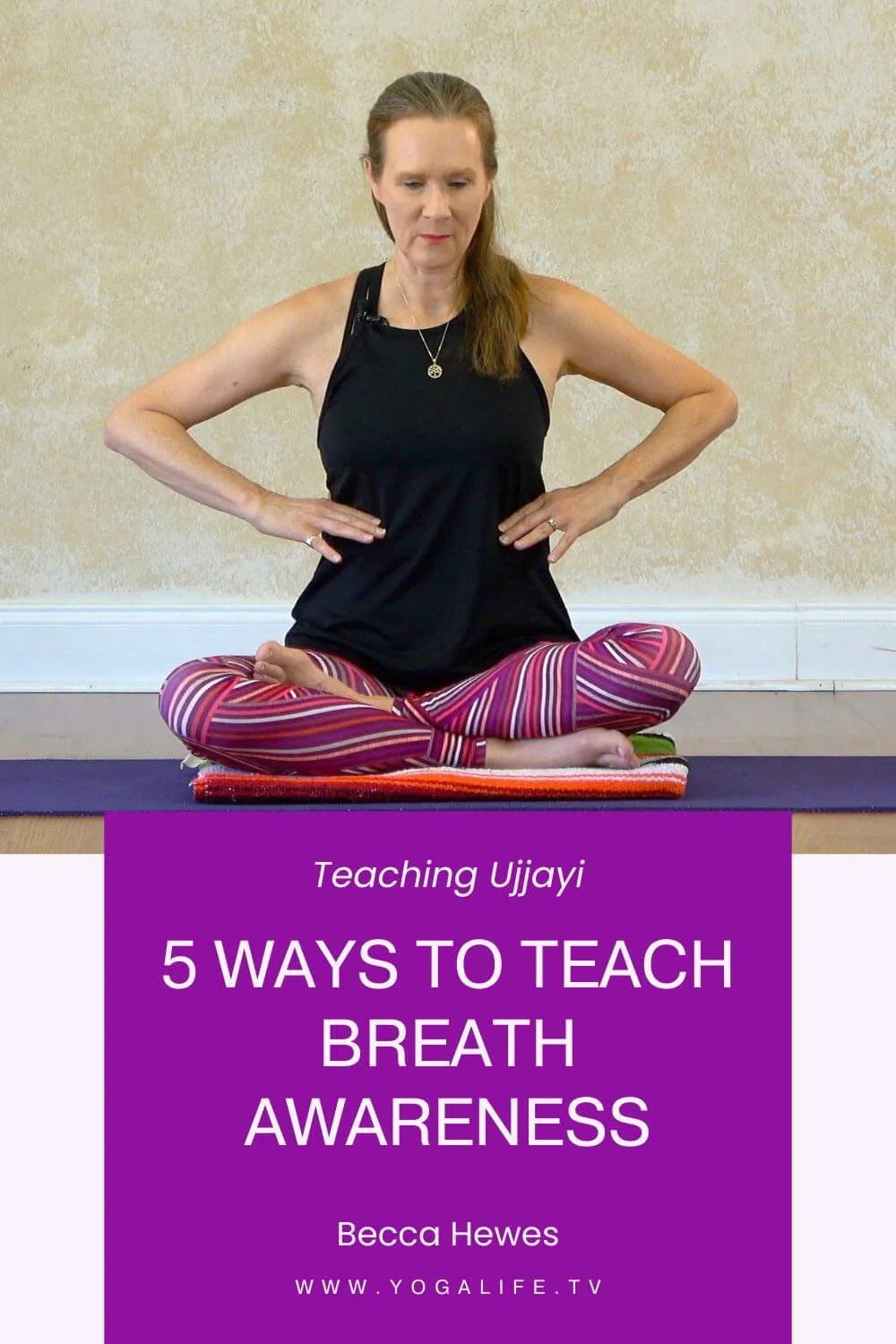Pranayama for Beginners: Teaching Ujjayi Breath
Becca is the author of Teaching Yoga: Creative Cueing for Safer Mixed Level Classes. A long-time studio owner and teacher trainer, she now teaches online, blogs, and creates resources for other yoga teachers.
Even after completing teacher training, many new teachers are unsure of how and when to teach Ujjayi in their classes. This uncertainty is partly due to the variety of ways different yoga styles approach the practice. Ujjayi, meaning “victorious breath,” is a foundational pranayama (breathing regulation) practice that encourages smooth, even breathing. The throat is gently constricted to create a soft, whisper-like sound as the yogi breathes in and out through the nose. Some yogis liken the sound of Ujjayi to gentle waves lapping at the shore, giving rise to the term “ocean breath.” Students must first master Ujjayi before progressing to more advanced pranayama techniques. Teaching pranayama for beginners starts with breath awareness.
5 Ways to Teach Breath Awareness
When first attending yoga, students learn basics such as foot placement on the mat and arm positions, along with pose names. Overloading them with Ujjayi cues may be overwhelming at this stage. I prefer to introduce simple breath awareness practices initially. These are sometimes referred to as pre-pranayama exercises. If students notice how their breathing affects their mind and body, they become more invested and interested when beginning Ujjayi is introduced. I start with breath awareness cues during the initial centering of the class and then remind everyone to pay attention to their breath throughout the session. Here are some breath awareness practices I find effective:
Observe the inhales and exhales; is one longer or shorter than the other? Aim for an equal rate of breathing in and out.
During centering, guide students to breathe in and out 10 times. Adjust the count based on the group's response.
Encourage attention to the sensations of the breath as air moves in and out of the nostrils, noting the cool sensation at the nose tip on the inhale and a warmer sensation in the nostrils on the exhale.
Introduce the yogic 3-part breath by asking students to notice the movement of the breath in the chest, ribcage, and belly.
Observe the pauses in the breath at the end of the inhale and exhale.
Ujjayi Pranayama for Beginners
In this video, I cover ideas for introducing pranayama to beginners, including the classic 3-part breath, and then basic steps for Ujjayi breathing. This video is part of my free course for teachers. For more information on the course, click here.
This video is part of my free course! Check it out here and receive 6 hours of CEUs.
Tips for Teaching Ujjayi Breath
Even students who are ready and interested in learning Ujjayi may struggle with the concept. They might produce a nasal, sniffy sound rather than the smooth, ocean-like whisper in the throat. Some overemphasize the noise, leading to tension in the throat and jaw. Here are a few tips I’ve gathered over the years to help students grasp Ujjayi:
Like this post? Pin me!
With the mouth closed, imagine making the sound 'haaaa' on the exhale.
Encourage them to imagine the sound heard when placing a seashell to the ear.
Visualize breathing through a narrow straw in the throat on the inhale.
Cue 6 counts on the inhale and exhale to promote even breathing. Adjust the count or offer a range from 4 to 8, depending on student experience.
Where to Sequence Ujjayi Pranayama for Beginners?
Different yoga styles have varying approaches to incorporating Ujjayi into classes, leading to strong opinions within the yoga community about its teaching and application. In some traditions, pranayama is practiced for 30 minutes or more before asana. Obviously, this approach may not work well for most students who attend class primarily for movement and exercise. It is often easier for new students to focus on beginning pranayama after they have engaged in asana and are physically tired. They are then more relaxed and potentially more open to trying the practice.
I was initially introduced to Ujjayi as a precursor to pranayama practice. However, I also find it helpful for focusing on my breath during asana practice. I believe there is no right or wrong way to integrate Ujjayi; each yogi must discover what works for them. In my classes, I remind students to breathe and to exit a pose if breathing becomes difficult. I teach beginning Ujjayi sometimes during the centering stage of class, and also at the end of class as we transition into a short pranayama practice or Shavasana. I don’t cue Ujjayi throughout the entire class; instead, I just remind students to breathe. Those who embrace it are welcome to practice it during their asanas. I maintain a relaxed approach, encouraging students to develop their practice and discover what suits them best. ♢
➪ For more teaching tips check out my book, Teaching Yoga: Creative Cueing for Safer Mixed Level Classes, now available on Amazon.
➪ Get 6-hours of CEUs with my FREE Mixed Level Teaching Essentials Course!
➪ Check-out my video library! Over 400 videos with accessible classes including modifications.



